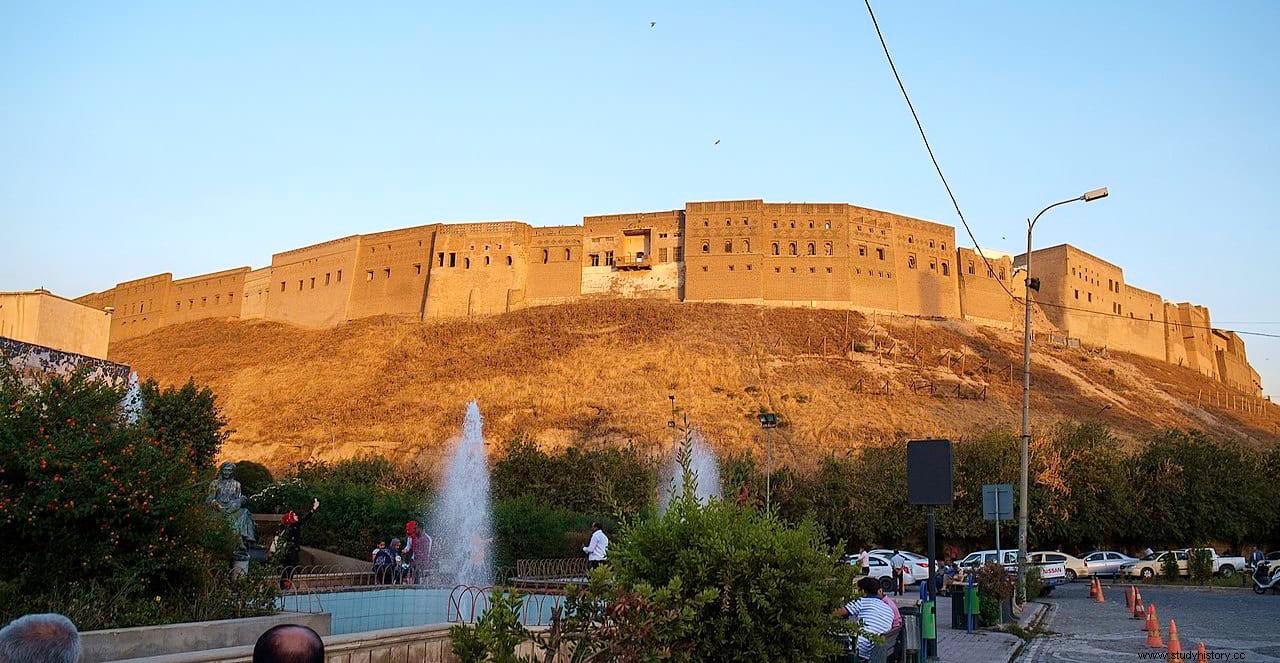The Near and Middle East are full of cities of proven antiquity, such as Byblos, Sidon, Jericho, Susa...
Less well known is the city of Erbil, in Iraqi Kurdistan, at the center of which is a fortified mound that is said to be the oldest continuously inhabited settlement in the world:the Erbil Citadel.
In November of last year, NASA published an image taken by Landsat 8 in which the small citadel can be seen surrounded by the modern city, in what seems to resemble a wheel and that the editor, Kasha Patel, takes advantage of to point out the coincidence of that, by all evidence, there were already people living in Erbil at the time humans invented the wheel.

And it is that for at least 6,000 years there has always been someone living on that 32-meter-high mound that has been formed by the accumulation of remains, rubble and mud from one settlement after another, and which today reaches an area of 10 hectares.
In the 19th century it was surrounded by high walls, giving it the appearance of an impressive fortress crossed by narrow labyrinthine alleys of uninhabited houses.

In 2017, according to the New York Times, only one family lived in the citadel, precisely to maintain the title of continuously occupied , after the rest of the inhabitants (840 families) were transferred (with financial compensation) ten years earlier in order to undertake a major restoration project. Even so, the mosque is still open and in use, as well as several museums such as the antiquities museum, which open their doors to tourists every day.
The government's objective, once the restoration work and archaeological excavations are completed, is to rehouse 50 families in the citadel. However, a decade after the start of the plan, things remain the same.
The first time that the citadel of Erbil appears in the historical sources we find it in the tablets of Ebla (Syria), around the year 2300 BC. (We talk about its discovery in How archaeologists discovered the first diplomatic treaties, written in a hitherto unknown language).

However, evidence of occupation has been found that dates back, as we said at the beginning, to the 5th millennium BC. Numerous Neolithic and Chalcolithic pottery shards have been found on the slopes of the mound.
In the II millennium B.C. Erbil was part of the Assyrian Empire, serving as a base for military campaigns to the east. Its importance came to rival that of Babylon and Asur. Later controlled by the Medes and the Achaemenids, the battle of Gaugamela took place very close to it in 331 BC

From the 1st century AD it was an important Christian center (see our article on the Assyrian People) even after the Muslim conquest, until the 9th century when the episcopal seat was moved to Mosul. In the 13th century it fell into the hands of the Mongols, later passing to Ottoman rule in the 16th century.
The wall that surrounds the citadel mound, although it may seem so at first glance, is not a defensive wall. It's not even a fortification. It is made up of the facades of more than 100 houses built one next to the other, which had to be reinforced with buttresses to prevent them from collapsing, because they were built too close to the slope of the mound.
Since 2014, the citadel has been part of the World Heritage Site, although the slow progress of the restoration works jeopardizes its inclusion on the UNESCO list.
